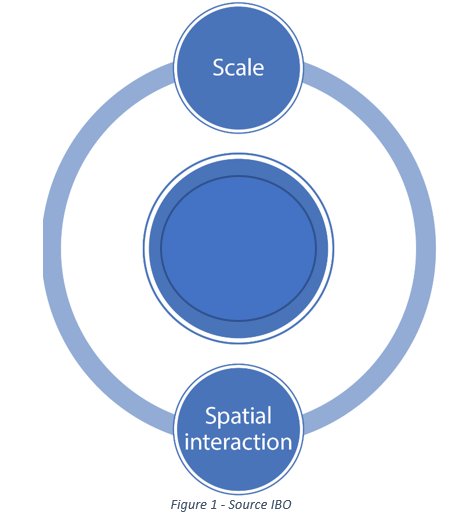The 4P's (and a fifth too!)
Task 1 - Click on the link above and download and complete the worksheet by reading the instructions carefully and completing the missing gaps as instructed.
Task 2 - Now you have your correct definitions, let's put this to the test with some geographical analysis using some resources developed by the IBO. Below are two embedded photos with arrows pointing to key features of the diagram.
Working in pairs or small groups, study both images carefully. What are your first impressions of both images? What makes them different (disparity) and what might connect them?
Annotate your evidence using the arrows in each photo. The arrows aim to concentrate your focus on clues to help you in your unwrapping of the geographic issues and connections. What type of country does each image show? HIC / MIC / LIC ?
Task 3 - Now look again at your 'fill in the gaps' worksheet from Task 1. Create a simple four square grid on the back of each photo sheet with 'Place, Process, Power & Possibility' written individually into each segment. Discuss with other groups in the room and then start filling these gaps in with information that you have gleaned from the photos. For place, are you going to commit to a continent, a country, a region or even a specific settlement?
Task 4 - Each group should now be charged with finding two images, ideally contrasting ones within a country or at different levels of economic development. You must study the images carefully and make notes privately on what you see including what the actual place is and what the processes, power and possibilities are. However, unlike the previous activity, do not add any arrows. Print the sheets out in colour and pass them to another group to complete the analysis. Each group should aim to add at last 8 evidence arrows and complete the 4P's grid on the back of each photo.
At this stage, feedback between groups can take place. You should find that you have neatly looked at spatial interaction as well as different scales whilst considering your 4P's ...... and you've also thrown in a lot of systems thinking too!
Further Thoughts - Revisiting the McDonald's work in the last unit.
In the last piece of work on synthesis, you were required to study an article on McDonald's expansion in China and try to use the content to link together key parts of the course. If we were to apply the 4P's to the article, it may look something like this:
Power - McDonald's only owns 20% of McDonald's in China, while Chinese state owns 52% - so you could see this as complexity in terms of who benefits most financially from the expansion of the company into China. Is it McDonald's or is it the Chinese government. What do KFC think about all of this government investment into a major competitor?
Process - There are substantial links with the nutrition transition that is studied in further depth in the Perspectives section the course.
Possibility & Place - The obvious food/health implications of having a McDonald's in every housing development that the company in question, Evergrande builds. Link this again back to Process.
Annotate your evidence using the arrows in each photo. The arrows aim to concentrate your focus on clues to help you in your unwrapping of the geographic issues and connections. What type of country does each image show? HIC / MIC / LIC ?
Task 3 - Now look again at your 'fill in the gaps' worksheet from Task 1. Create a simple four square grid on the back of each photo sheet with 'Place, Process, Power & Possibility' written individually into each segment. Discuss with other groups in the room and then start filling these gaps in with information that you have gleaned from the photos. For place, are you going to commit to a continent, a country, a region or even a specific settlement?
Task 4 - Each group should now be charged with finding two images, ideally contrasting ones within a country or at different levels of economic development. You must study the images carefully and make notes privately on what you see including what the actual place is and what the processes, power and possibilities are. However, unlike the previous activity, do not add any arrows. Print the sheets out in colour and pass them to another group to complete the analysis. Each group should aim to add at last 8 evidence arrows and complete the 4P's grid on the back of each photo.
At this stage, feedback between groups can take place. You should find that you have neatly looked at spatial interaction as well as different scales whilst considering your 4P's ...... and you've also thrown in a lot of systems thinking too!
Further Thoughts - Revisiting the McDonald's work in the last unit.
In the last piece of work on synthesis, you were required to study an article on McDonald's expansion in China and try to use the content to link together key parts of the course. If we were to apply the 4P's to the article, it may look something like this:
Power - McDonald's only owns 20% of McDonald's in China, while Chinese state owns 52% - so you could see this as complexity in terms of who benefits most financially from the expansion of the company into China. Is it McDonald's or is it the Chinese government. What do KFC think about all of this government investment into a major competitor?
Process - There are substantial links with the nutrition transition that is studied in further depth in the Perspectives section the course.
Possibility & Place - The obvious food/health implications of having a McDonald's in every housing development that the company in question, Evergrande builds. Link this again back to Process.



